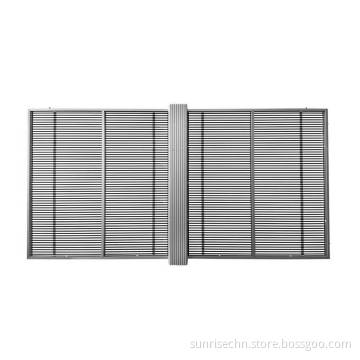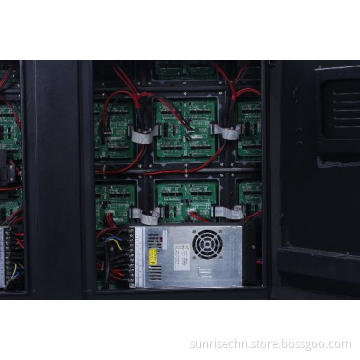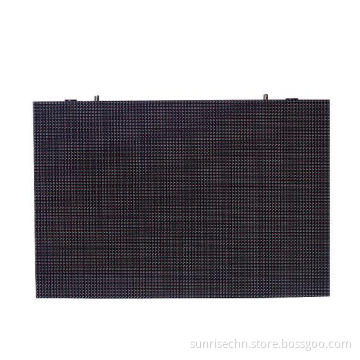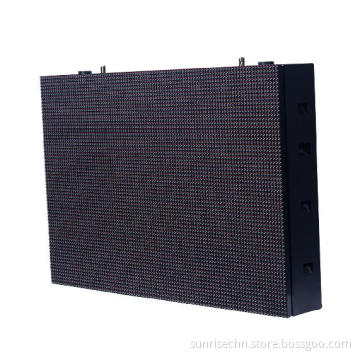
p14 outdoor electronic led display
- Payment Type:
- L/C, T/T
- Min. Order:
- 15 Square
- Min. Order:
- 15 Square
- Delivery Time:
- 25 Days
Your message must be between 20 to 2000 characters
Contact Now| Place of Origin: | Guangdong, China (Mainland) |
|---|---|
| Supply Ability: | 500 Square Meter/Square Meters per Month |
| Payment Type: | L/C,T/T |
2.Extremely competitive prices
3.Outdoor Virtual Led Display
"Better quality, realistic-looking images. The virtual pixel is a video-management feature that allows a 400% increase in image quality. But why do LED screens need to increase the image quality through a video-management feature in first place? It's pretty simple: despite its huge size, an LED screen usually has many less pixels than the common computer screen you are looking at right now. How is that possible? Because on an LED display, the distance between two pixels can be up to 30mm or even more. As a result, on a normal computer screen, you have 1024x768 physical pixels or more while on a 4x3 meters LED wall you have 192x144 physical pixels. Big difference! Now you are probably asking, how is that possible? Well, there are two different types of virtual pixels: geometrical/squared and interpolated. In Part 1 of this article we will discuss the geometrical/squared virtual pixel technology.
 This technology is based on pretty simple geometrical concepts. If you have two identical shapes placed next to each other, by taking half of each shape you can create other two identical shapes. For example, if you have two identical pixels lying next to each other, by taking half of each pixel, you can create two more pixels identical to the first two, doubling the number of pixels from two to four. Now imagine to double the number of pixels you have in length, and with the same technique double the number of pixels you have in height: to increase the number of pixels (and therefore the image quality) by 400%.
This technology is based on pretty simple geometrical concepts. If you have two identical shapes placed next to each other, by taking half of each shape you can create other two identical shapes. For example, if you have two identical pixels lying next to each other, by taking half of each pixel, you can create two more pixels identical to the first two, doubling the number of pixels from two to four. Now imagine to double the number of pixels you have in length, and with the same technique double the number of pixels you have in height: to increase the number of pixels (and therefore the image quality) by 400%. 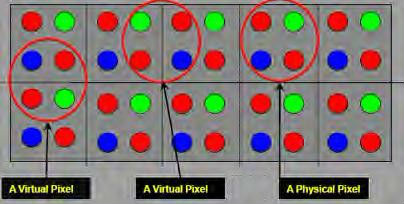 The difference from virtual pixel LED display to real pixel LED display:
The difference from virtual pixel LED display to real pixel LED display:1. Physical Arrangement:
Generally speaking, in real pixel LED display, each pixel consists of 1 red, 1 green and 1 blue LEDs. Although all the pixels are placed in average distance, not all the LEDs are placed in average distance. It is evident to tell one pixel from another pixel. In virtual pixel LED display, each pixel consists of 2 red, 1 green, and 1 blue LEDs. All the LEDs are placed in average distance. Each LED is shared by the contiguous 4 pixels. So there's an easy way to distinguish virtual pixel LED display by the physical appearance is to see if the pixel consists of 4 LEDs (2R1G1B), and if all the LEDs are placed in average distance.
2. Resolution Effect:
In real pixel LED display, each LED is shared by 1 pixel only. But in virtual pixel LED display, each LED is shared by 4 pixels at the same time, with the image process technology combined, the resolution of virtual pixel LED display is theoretically improved 4 times as high as of real pixel led display.
But when showing the texts, the LED can't be shared by 4 pixels at the same time, the sharpness turns back to the same with on real pixel LED screen. Over the past 6 years some manufacturers developed a technology that allows going beyond these limitations and guaranteeing a superior image quality with any resolution. Does it mean that the geometrical/squared virtual pixel is not a good technology? Well, let's just say that it is definitely not the most recent one. Some LED wall manufacturers still use it, so when considering your LED screen supplier, make you check how their virtual pixel technology works. Case Of Virtual Outdoor Led Display P16
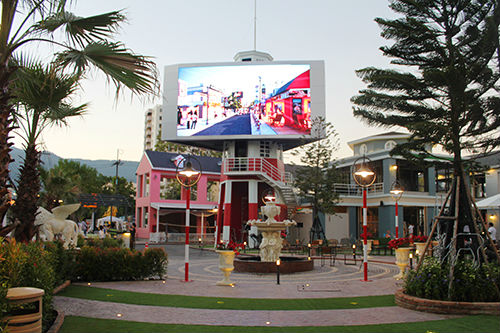
Specification | PH10 | PH12 | PH16 | PH20 | PH25 | PH31.25 |
Pixel Configuration | 1R1G1B | 1R1G1B | 1R1G1B | 1R1G1B | 2R1G1B | 4R2G2B |
Density of pixel | 1/4 scan | 1/4 scan | Static | Static | Static | Static |
Module Resolution | 16*16(W*H) | 16*16(W*H) | 16*8(W*H) | 16*8(W*H) | 8*8(W*H) | 8*8(W*H) |
Pixel Pitch | 10mm | 12mm | 16mm | 20mm | 25mm | 31.25mm |
Best Viewing Distance | 12.5mm | 15mm | 20mm | 20mm | 32mm | 40mm |
Module Size(mm) | 160*160*25 | 192*192*25 | 256*128*30 | 320*160*30 | 200*200*30 | 250*250*25 |
Cabinet Size(mm) | 960*640*225 | 800*800*225 | 1024*768*230 | 1280*960*230 | 1600*1200*230 | 1000*1000*225 |
Weight | 35Kg | 40Kg | 45Kg | 60Kg | 65Kg | 50Kg |
Working Voltage | AC220/110 � 10%, 47~63Hz | |||||
Maxim Power | ?1000W | ?750W | ?1650W | ?1650W | ?1000W | ?800W |
Average Power | ?450W | ?300W | ?700W | ?700W | ?425W | ?350W |
Pixel density | 10000 | 6400 | 3906 | 2500 | 1600 | 1111 |
Contrast Ratio | 6000:1 | 6000:1 | 6000:1 | 6000:1 | 6000:1 | 6000:1 |
Frame Rate | 60 MHz | |||||
Working Temperature | -20�C to +60�C | |||||
Operating humidity | 20% to 90% | |||||
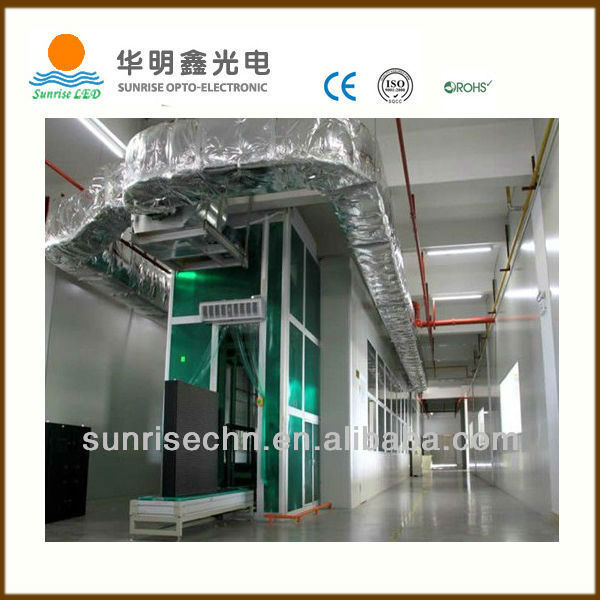
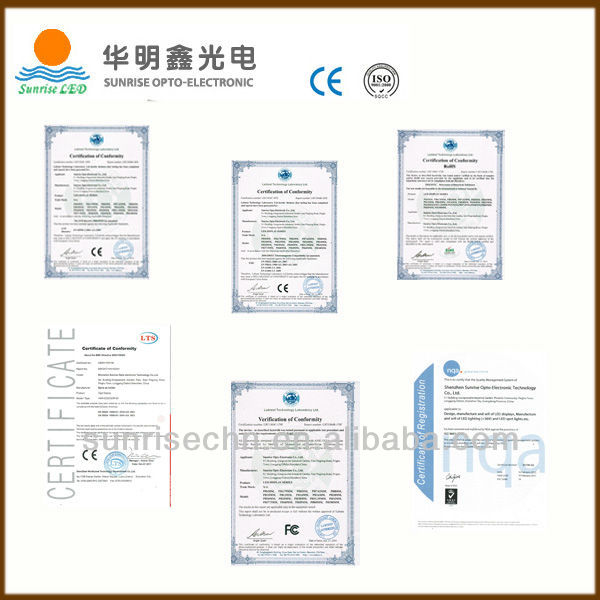 Before we offer you best quotation,we'd to confirm some details if you don't mind: 1.What's the size of screen,cabinet you prefer? 2.What's the best viewing distance with your project? 3.What's the color of cabinet you need?any logo on back of cabinet? 4.When do you need to get goods?is this urgent? 5.Any special requests?such as video processor,hanging bar,flight case for package?please advise it as well. Cooperation is not a fist. It's an open hand waiting for some other hand to enter it. SKYPE ACCOUNT: hmx0088 "
Before we offer you best quotation,we'd to confirm some details if you don't mind: 1.What's the size of screen,cabinet you prefer? 2.What's the best viewing distance with your project? 3.What's the color of cabinet you need?any logo on back of cabinet? 4.When do you need to get goods?is this urgent? 5.Any special requests?such as video processor,hanging bar,flight case for package?please advise it as well. Cooperation is not a fist. It's an open hand waiting for some other hand to enter it. SKYPE ACCOUNT: hmx0088 " Related Keywords





